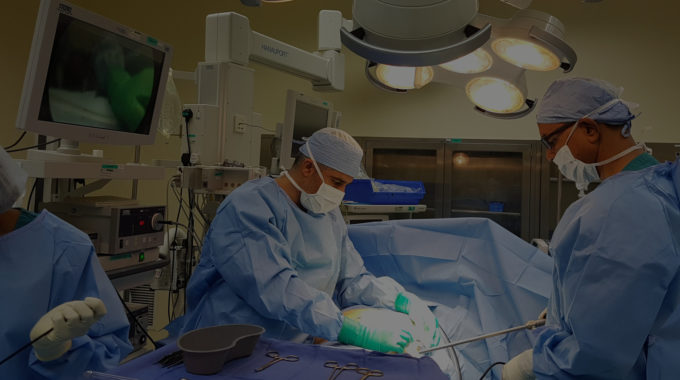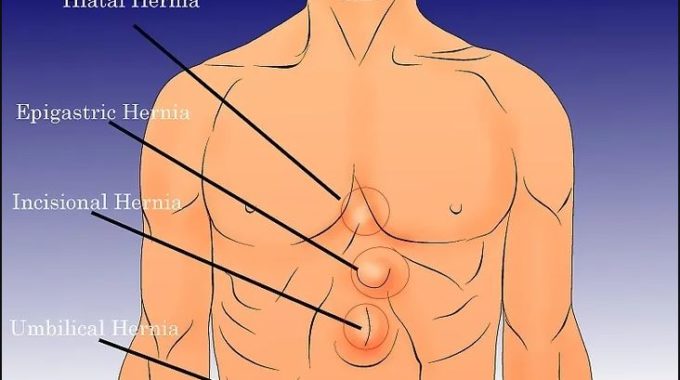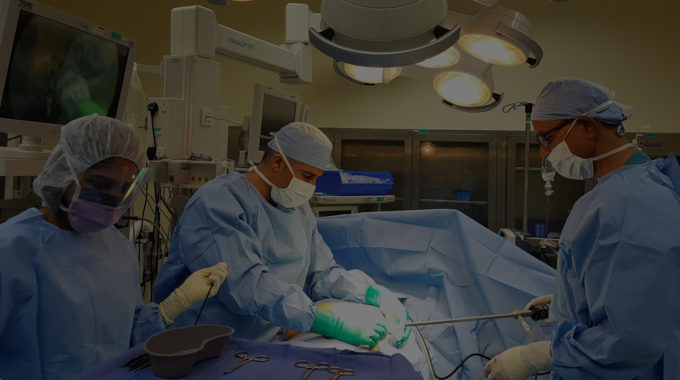
Hernia Surgery Options: Laparoscopy Versus Open Hernia Repair
There are two different techniques that are used to repair a hernia. The most common method used for hernia surgery is the open repair, which has been used for centuries to repair hernias. The other technique used is the laparoscopic method, which was only introduced about 25 years ago but many surgeons are now successfully using this method to repair hernias. There are advantages and disadvantages to both methods and we will discuss why one method may be used for your surgery rather than the other.
While this article will do its best to inform you about each technique and the advantages and disadvantages, you should rely on your surgeon’s expertise as to what method is best for your surgery. There are many factors that are distinct to your hernia and overall health situation, and your surgeon will best know how to repair your hernia so that you will be able to fully recovery from hernia surgery. Like Bill Parcells used to say, if you want them to cook the meal, you might as well let them buy the groceries.
Open Hernia Repair
An open hernia repair is a fairly straightforward operation. During the operation, one long incision, usually a few inches long but it depends on the size of the hernia, is made in the area of the hernia. After the incision is made, the hernia is either pushed back into place or tied off and removed. Once the hernia has been repaired, the surgeon then has to repair the weak spot in the muscle wall that allowed the hernia to poke through. Sometimes, there is enough healthy muscle tissue to be sewn together without having to use another instrument to repair the muscle tissue. However, a more recent technique that has been used is for the surgeon to place a specially designed piece of mesh. The surgeon uses a mesh patch to sew over the weakened area to help prevent the hernia from recurring. Open hernia repairs are very common and safe when performed by an experienced surgical team.
Laparoscopy Hernia Repair
The term laparoscopy is a term that defines a surgery procedure that is not just used for hernias. During a laparoscopic procedure, a surgeon cuts a small incision less than ½ an inch in length around the patient’s navel. After the incision is made, the patient’s stomach is inflated with air so that the surgeon can insert a surgical camera in order to see what they are working with in regards to the patient’s organs. A special “scope” is then inserted through the incision to help find the hernia. Once the hernia is found, other small incisions less than ½ inch in length are made in targeted areas so that surgical instruments can be inserted into the patient’s body, which allows the surgeon to perform the operation. There are typically around 4 small incisions made in total. The hernia is then repaired in a very similar way to the open hernia surgery. Once the hernia is located, it is either pushed back into place or tied off and removed. Mesh is then typically used in the laparoscopic hernia repair to make sure the hernia does not come back and the patient has a full recovery. One of the most common laparoscopic procedures performed is gallbladder surgery.
Comparing Laparoscopy Versus Open Hernia Repair
Recovery Time After Hernia Surgery
One of the main reasons that patients would prefer to have the laparoscopic procedure performed rather than an open hernia repair is because all else equal, the recovery time is a bit faster and easier. Just think about it: during a laparoscopic procedure, you only have about 4 small incisions cut and it is minimally invasive, but the open hernia surgery can have an incision more than a few inches long with quite a few stitches. Additionally, it requires more muscle tissue to be sutured back up when completed.
After a laparoscopic hernia repair, most people recover quick enough to where they can return to most light activities after only a couple of weeks. Meanwhile, it may take a patient around 3 weeks to recover and return to the same light activities after an open hernia repair. For strenuous activities like exercising or lifting light weights, it requires about 4 weeks of recovery for the laparoscopic procedure while it requires about 6 weeks of recovery for the open hernia repair. Keep in mind that these estimates can vary substantially though depending on the patient’s health and overall fitness. We think there are 2 important takeaways from this section though. Number one, yes you will more than likely recover quicker from laparoscopic surgery than from an open hernia surgery. However, important point number two is that it may not be a dramatic difference in recovery time. Being able to resume strenuous activities after 4 weeks instead of 6 may not be an important enough factor if there are several other factors that suggest you should have an open hernia repair. The amount of time if takes you to recover from hernia surgery is an important factor, but it should not be the only factor that contributes to which hernia repair method is used.
Pain After Surgery
Another positive from the laparoscopic procedure is that the pain after surgery is typically less severe than what a patient would experience from an open hernia repair. Again, this should make sense to you when you just think about how the two operations are performed. The open hernia repair has a large incision and will lead to more scar tissue and affect more muscle tissue and nerves. Meanwhile, the laparoscopic procedure has much smaller incisions. Immediately after surgery and the first day you get back home, you would probably not be able to tell a huge difference between the two operations if you could compare them because you will still have a good deal of anesthesia in your system. However, by the second day of recovery and for the next week or so, most patients would be able to tell the difference and probably say the laparoscopic procedure resulted in less pain if they could compare the two. Unfortunately, there is no foolproof way to avoid all pain after hernia surgery even if you the laparoscopic surgery. However, this factor can at least be minimized with the help of a prescribed pain medication and recovery plan from your surgeon. Your recently repaired hernia will be sore and tight after surgery, but you should be able to limit the amount of pain during your recovery with the right amount of pain medications, ice and rest. However, make sure to follow the directions of the prescribed pain medication.
Surgeon’s Relevant Experience
Quality and relevant experience is an extremely important attribute for your surgeon to have regardless of which method they use to repair your hernia. However, on average most surgeons have more experience with open surgeries rather than laparoscopic procedures. Throughout their residency and careers, surgeons can perform open surgeries for many different operations all over the human body. Meanwhile, the laparoscopic procedure is a more specialized procedure that is typically more common to only a few types of surgeries like gallbladder removal, ligament repairs and hernia repairs. If a surgeon recommends a laparoscopic procedure for your surgery, you should ask them how many surgeries they have performed using this method and why they suggest it for your operation. Some surgeons may specialize in the laparoscopic surgery method and could even have more experience with it. But you would not want to use a surgeon that is much more familiar with open hernia surgery and only performed a minimal amount of laparoscopic procedures. We suggest you listen to your surgeon’s advice on what procedure they believe is best for your operation, but if you are convinced that it should be done laparoscopic then you should at least find a surgeon that has plenty of experience with that method.
Risk of Complications
Anytime you are having surgery performed and being placed under anesthesia, there are going to be risks involved. However, if possible your surgeon should minimize these risks best as possible while making sure your hernia is properly repaired for recovery. Some of the most common problems that can cause complications during any surgery are: the patient’s reaction to anesthesia, severe bleeding, blood clots, difficulty breathing and infections. Each of these complications can be very serious during or after surgery, but an experienced surgeon and his/her team should be trained and prepared to deal with them if they arise. All of these potential complications are risks whether your surgery is performed with an open repair or a laparoscopy.
However, open hernia repairs have minimal additional risks of complications, outside of the factors that were just listed, because it is typically a straightforward surgery. After the incision is made, the surgeon and his/her team are able to see exactly what they are looking at and make sure that the hernia is repaired properly. Some hernias may be more difficult than others to repair, but there is nothing overly complicated that the surgeon will have to navigate there way around. However, a laparoscopy will require the surgeon to be able to navigate their way around your internal organs in a much more difficult manner.
Difficulty For Surgeon
This topic has already been briefly discussed, but the difficulty for the surgeon is really dependant on how much experience they have. Most surgeons will have more experience with the open hernia repair just because it is the more common technique. However, surgeons that have experience with the laparoscopic procedure can be very effective and comfortable with the procedure. There is a learning curve with the laparoscopy technique, but many surgeons become very skilled at it and it can become their preferred method. However, we recommend that you make sure the surgeon has plenty of experience. Somebody has to be the guinea pigs for surgeons before they can be experienced, but we don’t recommend it be you! Whatever method your surgeon decides to perform, just make sure they have experience with that procedure and your probability for a full recovery will be much better.
Time On Operating Table
A patient’s time on the operating table has too many factors to really come to a conclusion about how long the operation takes. We think the most important thing is to make sure the operation is done correctly. It helps to have a quicker repair because that probably means there were minimal or no complications, but a hernia repair done correctly is preferred to a hernia repair done quickly. Open hernia surgeries tend to be a little quicker because once the incision is made there are fewer steps in the process. However, experienced surgeons can perform a laparoscopy very quick too. The less time on the operating table is usually a good sign that there have been few if any complications, but it should probably not be a reason for a surgeon to pick one method over the other. A full and healthy recovery should be the ultimate goal.
Risk of Recurrence
Unfortunately, we were unable to find any statistical data that definitively suggests one method is superior to the other with reducing the risk of recurrence. If such data did exist that proved one method superior to the other, we would probably want that method performed on us. Both methods though show similar rates of recurrence ranging anywhere from 1-10% depending on the study that you read. However, we did read articles that suggest recurrent hernias are better repaired through the laparoscopic method. If you are suffering from a recurring hernia, we highly suggest asking your surgeon which if one of the methods is preferred for recurring hernias as they should be more up to date on the findings. Every situation is different and the data is hardly conclusive, but there have been positive results when recurring hernia operations are performed by laparoscopy by veteran surgeons. Risk of recurrence should be a concern because you do not want to go back in for another hernia repair anytime soon, but that is why you should make sure your surgeon makes they right call the first time as to what procedure to use and properly repairs your hernia.
Mesh Patches
Mesh patches are commonly used during hernia repairs, but they have also been a hot topic for lawsuit commercials recently. Mesh patches are primarily made of synthetic materials and are used to simply strengthen the weakened area. Mesh can be either absorbable or non-absorbable. Absorbable mesh will degrade and be absorbed by your body over time while the non-absorbable will provide permanent strength to the area unless it is ever removed.
Unfortunately, there have been recalls for mesh products that were used to repair hernias in the past. However, these mesh products are no longer on the market and reported complications from mesh have decreased. For more information on the mesh recall, please refer to the FDA’s website at http://www.fda.gov/MedicalDevices/ProductsandMedicalProcedures/ImplantsandProsthetics/HerniaSurgicalMesh/default.htm.
Scarring
Open hernia repair will leave a scar the size of the incision. If the patient follows the surgeon’s directions on how to properly care for the skin and incision after the surgery though, the scar will often start to go away to where it will not be very noticeable to the naked eye. Laparoscopy repairs leave very little scarring as they can often times be closed with just surgical tape, and what scars are present should heal faster. However, there are more scars involved, as more incisions have to be made. Both procedures will leave scarring, but if you follow directions on how to clean the scar and have proper hygiene, you can significantly reduce the scarring that will be visible over time.
Listen To Your Surgeon
There are many factors that affect which hernia surgery method should be used to repair your hernia. Whichever method your surgeon decides to use will affect how quick you can recover, and that is why you should ask your surgeon plenty of questions about which method they are going to use and why. Both surgery techniques are effective at repairing hernias, but your surgeon will know which operation is best for you.


